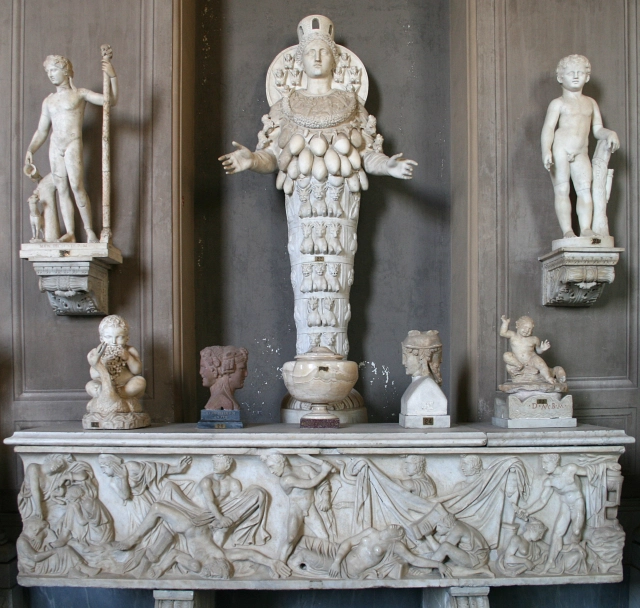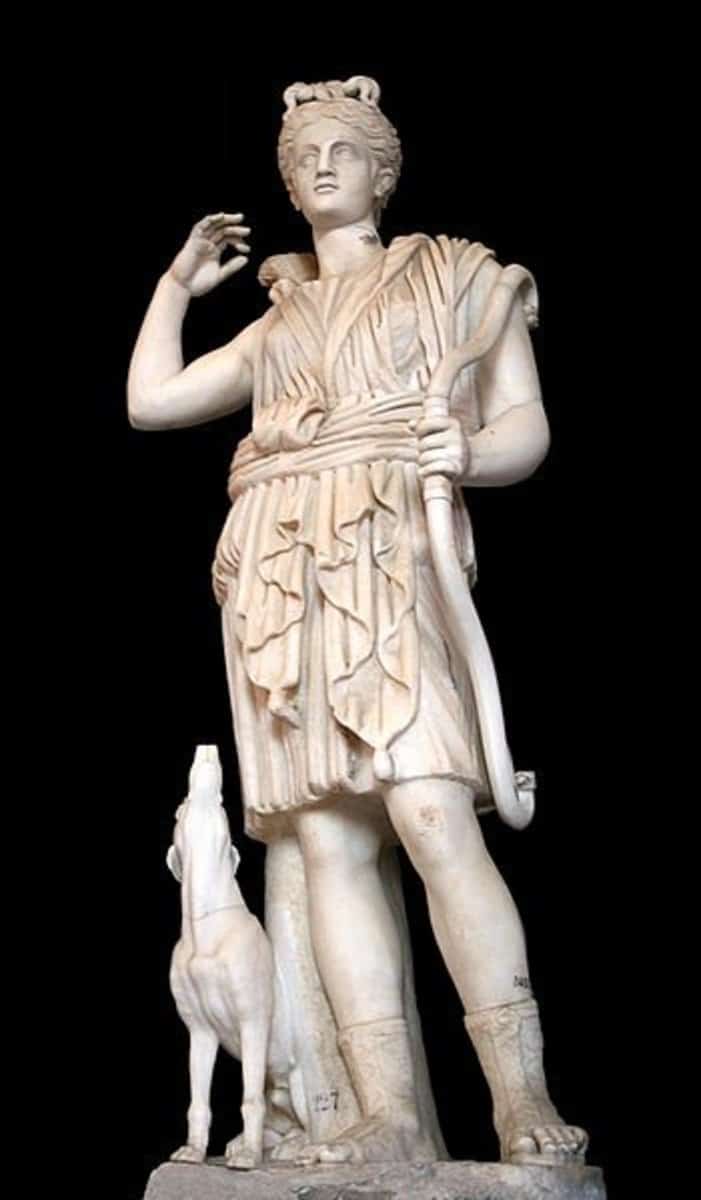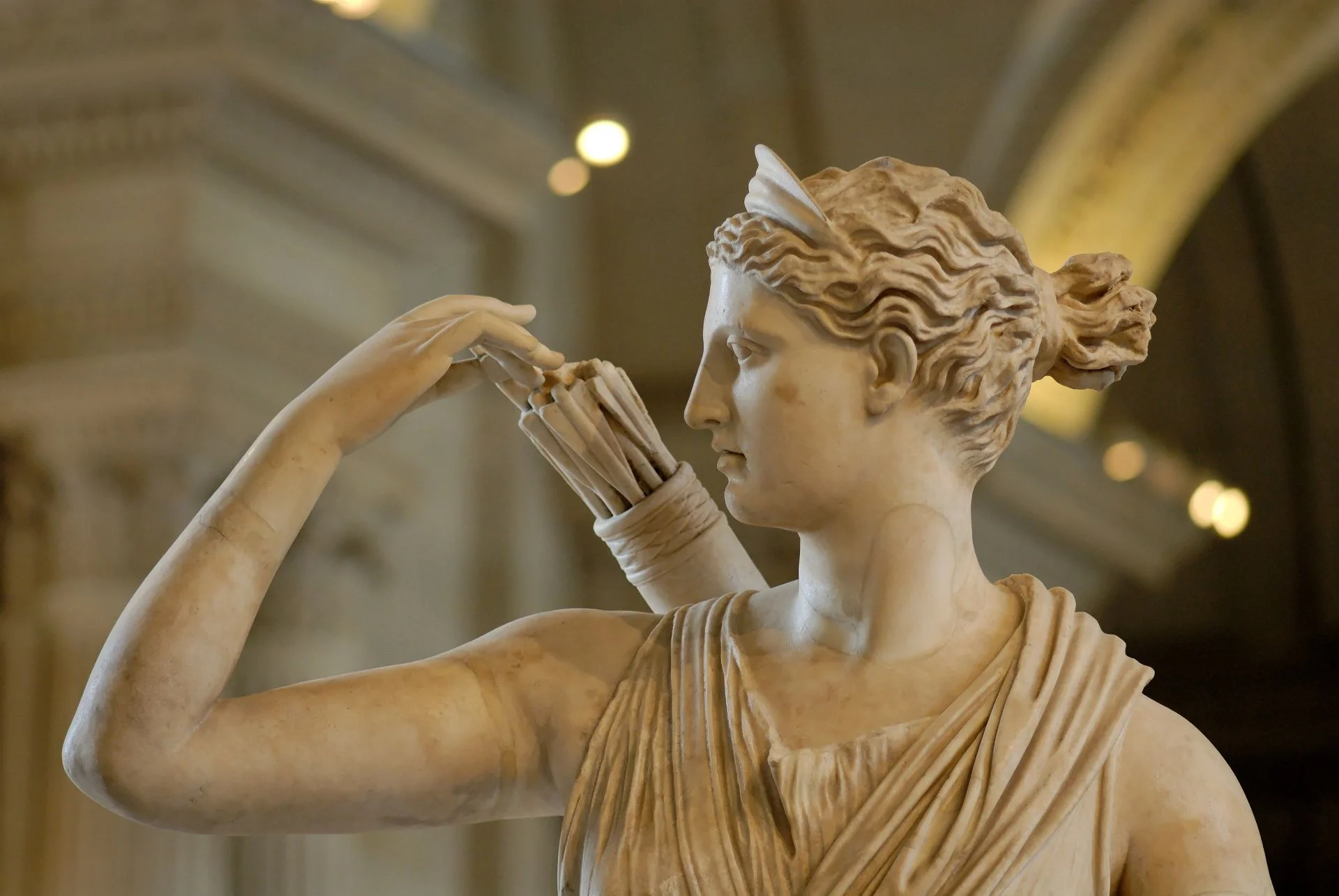Artemis is one of the most revered goddesses in Greek mythology. Known as the goddess of the hunt, the wilderness, childbirth, and virginity, Artemis was a powerful and complex figure. Her birth, powers, relationships, kids, symbols, and exciting facts continue to fascinate scholars and enthusiasts alike.
According to Greek mythology, Artemis was the daughter of Zeus and Leto and the twin sister of Apollo. She was born on the island of Delos, where she helped her mother give birth to her brother.
Artemis was known for her fierce independence and her love of the wilderness. She was often depicted carrying a bow and arrow and hunting wild animals in the forest.
Artemis was also known for her role as a protector of young women and her association with childbirth. She was often invoked by women in labor and was believed to help ease the pain of childbirth. Her symbols included the crescent moon, the deer, and the cypress tree.
These symbols were often used in artwork and literature to represent her power and influence.
Birth
Artemis is one of the most famous goddesses in ancient Greek mythology. She is known as the goddess of the hunt, the moon, and childbirth. Artemis was born to the Titaness Leto and the god Zeus. Her twin brother is Apollo, the god of music, poetry, and prophecy.
According to the myth, Leto was pregnant with Artemis and Apollo, but Hera, Zeus’s wife, was jealous and forbade Leto from giving birth on any land. Leto finally found refuge on the island of Delos, where she gave birth to Artemis and Apollo.
It is said that Artemis was born first and helped her mother during the delivery of Apollo.
Artemis’s birth was surrounded by symbolism. She was born on Delos island, considered a sacred place in ancient Greece.

Delos was also known as the birthplace of Apollo, Artemis’s twin brother. Artemis was often associated with the moon, symbolizing femininity and fertility.
Artemis’s birth was also linked to her powers. As the goddess of the hunt, she was known for her strength and agility.
As the goddess of the moon, she was associated with the night, and her powers were said to be strongest during the full moon. As the goddess of childbirth, she was believed to protect women during pregnancy and childbirth.
Artemis’s birth is an integral part of Greek mythology and is often depicted in art and literature. It symbolizes the power of women and the importance of childbirth in ancient Greece. Artemis’s birth also highlights ancient Greek mythology’s complex relationships between the gods and goddesses.
Powers and Relationships
Artemis was a powerful goddess in Greek mythology, known for her many abilities and associations. She was often associated with the hunt, wild animals, and the wilderness and was viewed as a protector of young girls and a mistress of animals.
Artemis was often depicted with a bow and arrow, which she used to hunt wild animals like deer.
She was also associated with the hunting dog, which was believed to be her companion in the forest. In addition to her hunting abilities, Artemis was known for her skill with the chariot, which she used to traverse the skies and the earth.
Artemis had several important relationships in Greek mythology, including her twin brother Apollo.
The two were often associated with the sun and stars and were believed to have been born on the same day.
Despite their close relationship, the two siblings were also known for their fierce competition, particularly in music and archery.
Artemis was also associated with several other figures in Greek mythology, including the nymphs and the aloadae giants. She was believed to have had a close relationship with the nymphs, often depicted as her companions in the forest.

The aloadae giants, on the other hand, were believed to have once attempted to overthrow the gods and were ultimately defeated by Artemis and her brother Apollo.
In addition to her relationships with other Greek figures, Artemis was associated with several symbols and objects, including the cypress tree and the hunting knife.
The cypress tree was believed to be sacred to Artemis and was often used to construct altars dedicated to her.
On the other hand, the hunting knife symbolizes her prowess as a hunter and protector of the wilderness.
Artemis was a complex and influential figure in Greek mythology, known for her many abilities and associations. From her role as a protector of young girls to her fierce hunting abilities, Artemis was a goddess who inspired both fear and reverence in those who worshipped her.
Kids
Artemis, the Greek goddess of the hunt, wilderness, childbirth, and virginity, was known to have a special connection with children.
She was often depicted as a protector of young children, especially girls, and was believed to watch over them as they grew up.
Artemis was said to have been born a child, and her birth was miraculous. As soon as she was born, she helped her mother give birth to her twin brother, Apollo.
Artemis was also known to have had several children of her own. According to some myths, she had a son named Parthenopaios, who was said to have been born without a father.
In other myths, she was said to have had many daughters, including Kallisto and Britomartis.
In addition to her role as a protector of children, Artemis was also believed to have had the power to heal them. She was often called upon to help sick children and was said to have been able to cure diseases and ailments with her magical powers.
Overall, Artemis was a beloved figure in Greek mythology, and her connection with children made her an essential goddess for parents and families.

Symbols
Artemis is often depicted with various symbols that represent her powers and attributes. Some of the most common symbols associated with her include:
- Silver Bow and Arrows: Artemis is known as the goddess of the hunt and is often depicted carrying a silver bow and arrows. This symbolizes her skill and accuracy as an archer and her ability to hunt and kill animals.
- Moon: Artemis is often associated with this celestial body as the moon’s goddess. In some myths, she is said to be able to control the moon’s phases and use its light to aid her in hunting.
- Deer: Artemis is also commonly associated with the deer, which she considers sacred. She is often depicted with a deer by her side or holding one in her arms. This symbolizes her connection to nature and her role as a wilderness protector.
- Quiver: Like her brother Apollo, Artemis is often depicted carrying a quiver of arrows. This symbolizes her readiness for battle and her ability to defend herself and others.
- Shrines: Artemis was worshipped in many ancient Greek cities, and each city had its shrine or temple dedicated to her. These shrines were often located in forests or other natural settings, further emphasizing her connection to the natural world.
Overall, the symbols associated with Artemis reflect her role as a powerful and independent goddess skilled in hunting, archery, and protecting the wilderness.
Interesting Facts
Artemis is a fascinating goddess with a rich mythology and an important place in Greek culture. Here are some interesting facts about Artemis that you may not have known:
- Artemis was born on the island of Delos, where her mother, Leto, sought refuge from the wrath of Hera, Zeus’s wife. According to the myth, Delos was a floating island until Artemis was born and anchored it to the sea floor with her bow and arrow.
- Artemis was the goddess of the hunt, wilderness, childbirth, and virginity. She was often depicted as a fierce and independent young woman, dressed in a short tunic and armed with a bow and arrows.
- Artemis was also the protector of young girls and women and was often invoked during childbirth to ensure safe delivery. She was associated with the moon and was believed to have the power to heal diseases.
- Artemis had a twin brother named Apollo, the god of music, poetry, and prophecy. The two were often depicted together and were known for their close relationship.
- Artemis was worshipped throughout Greece, but her most famous temple was located in Ephesus, a city in modern-day Turkey. The Temple of Artemis was one of the Seven Wonders of the Ancient World and was a magnificent structure that housed a statue of the goddess.
- Artemis was a popular figure in literature, appearing in many Greek mythology works. She was often portrayed as a strong and independent woman, unafraid to stand up to the gods.
Overall, Artemis was a complex and fascinating goddess who played an important role in Greek culture. From her birth on the island of Delos to her famous temple in Ephesus, Artemis has left a lasting legacy that fascinates people today.
Frequently Asked Questions
What are some interesting facts about Artemis?
Artemis is one of the twelve Olympian gods and goddesses known as the goddess of hunting, wilderness, childbirth, and virginity. She is often depicted with a bow and arrow and is said to be a skilled archer. Artemis is also known for her love of animals, especially deer. She is often associated with the moon and is said to have the power to control it. Artemis is known for her fierce independence and her aversion to marriage.
What are the symbols associated with Artemis?
Artemis is often associated with the moon, and her symbols include a crescent moon, a bow and arrow, a deer, and a hunting dog. She is also sometimes depicted with a torch, symbolizing her role as a protector of women during childbirth.
What powers does Artemis possess?
Artemis is a powerful goddess with many abilities. She is known for her hunter skill and ability to control the moon. She is also said to have the power to heal and protect women during childbirth.
Who are Artemis’ siblings?
Artemis is the daughter of Zeus and Leto and has a twin brother named Apollo. She is also said to have many half-siblings, including Athena, Hermes, and Dionysus.
Did Artemis have any children?
Artemis is often depicted as a virgin goddess and is not known to have had any children.
What was Artemis’ relationship status?
Artemis is often depicted as a fiercely independent goddess without interest in marriage or romantic relationships. She is often associated with virginity and is said to have taken a vow of chastity.

